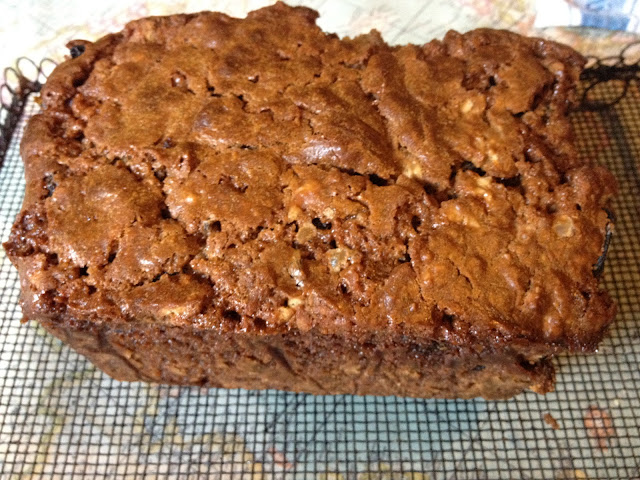Finest Beef Dripping, the 'authentic flavour' - a 'Great British Ingredient'. I've made steamed puddings using beef suet before, so I thought it might have a similar flavour.
The difference between suet and dripping, is (I think), that dripping is the fat and other liquids that drip off meat as it is cooked, whereas suet is pure fat and comes (mostly) from around the kidneys of animals (sheep, pigs or cows). None of this sounds terribly appetising for putting in cakes....
So, the recipe is this:
1Ib flour
6oz good dripping
2oz candied orange peel
1/2 Ib raisins
6oz sugar (pieces or Barbados)
1/2 pint milk
1 large tablespoon black treacle
2 eggs
1 teaspoon bicarbonate of soda
Sift flour and rub in the dripping thoroughly. Chop the candied peel and stone the raisins. Add to the flour with the sugar. Beat the eggs to a froth and stir into the mixture with enough cold milk to make a stiff paste. Warm 1/2 gill of the milk with the treacle, mix with soda and add. The mixture should drop easily from the spoon. Turn into a greased and papered cake tin, and bake in a moderate to slow oven for 11/2-2 hours.
This is a good well-keeping cake, suitable for lunch or country tea.
Country tea!! Sounds great.
So, rubbing dripping into flour takes ages, as the dripping is hard (harder than butter) and takes longer to soften. This is perhaps a good idea, as the mixture stays colder for longer. I was careful to aerate the flour this time.
Adding the raisins and candied fruit was easy.
I used this sugar:
As the recipe called for 'pieces' and we had it on the shelf. I have no idea if this will work - the sugar may not melt and so the cake might just be savoury.....
Warming the milk, and adding the treacle was delightful, and smelled of gingerbread, but once I added the soda (and it fizzed up), my son noticed that it looked like a saucepanfull of mud...again, not particularly appetising.
I wanted to get the oven temperature as low as possible (the vinegar cake wasn't cooked in the middle), and I think it was on about 160c, for 2 hours, during which time it rose well, was liquidy in the middle, and (most disappointing) didn't give out a cake cooking kind of smell at all.
So I raised the temperature to just below 200c, and it started to drop over the paper lining onto the oven floor, filling the kitchen with smoke! Oh dear.
I put a baking tray under the loaf tin and it's still in there. God knows what's going to happen next. Still no nice smells....starting the think there's a reason why dripping has gone out of favour...
Oh dear. Well the good news is that it actually cooked all the way through:
And the smell was nice at the end. A kind of warm, slightly Autumnal and nostalgic scent which initially gave me the hope that the cake would be delicious. And when it came out, it looked good. The top was crusty, and slightly chewy like a really deep cookie, and shiny as if it had been brushed with beaten egg.
The very crisp corners and grooves where the baking paper has creased kind of look attractive, until you realise that this is the result of beef fat, which has melted and then solidified (I suppose...) into this shiny shape.
Inside, it hasn't been mixed properly...I was trying not to overmix it and make it heavy, like the vinegar cake, but obviously under did it this time. Although the marble effect is not unattractive I think...
Okay, and so to the taste. I cut a slice for myself of about half an inch thick and ate it. There's quite a pleasant flavour, reminiscent of suet puddings (if you like steamed puddings, this is not a million miles away), however, there is one quite revolting drawback...the film of thick grease that sticks to the upper mouth afterwards and can't be removed....Arghhhhhhh! I would say that this alone gives me reason to NEVER MAKE A DRIPPING CAKE AGAIN!
My two sons tried it. The first (aged 7) ate half a slice, and then said "Actually can I stop eating this now please?" and the second (aged 12) ate one mouthful and spat it out.
So there you go, I don't think Dripping Cake will be on the Retro Baking blog again (or in our house). Shame, I like the idea of it.
My first two cakes have been a bit of a disaster. I'm going to try and make one that's nice next. Maybe the Lemon Whisky Cake!
















